Gold and The Monetary System: The US–EU Conflict
For anyone who is still in doubt if the US have been suppressing the price of gold in the past decades, this article might change your mind. I present a memo written in 1974 by Sidney Weintraub, Deputy Assistant Secretary of State for International Finance and Development, to Paul Volcker, Under Secretary of the Treasury for Monetary Affairs. It was originally published in Document 61, Foreign relations Of The United States, 1973–1976, Foreign Economic Policy, Volume XXXI found at the Office of the Historian website.
The memo addresses the problem of the US’ interest of banning gold from monetary system and capping the free market price (in order to push the USD as the world reserve currency – although the Americans among each other pretended they preferred the SDR for this role), while some European countries wanted to remonetize gold and revalue it market to market.
What I find fascinating is that there is anti-gold propaganda within this internal memo of the Americans. To me this illustrates how politicians operate; a proper lie must be embraced completely and the more often it’s repeated, the stronger it holds.
A long well worth read. Apart from the bold accents by me, this is an exact copy of the original.
61. Note From the Deputy Assistant Secretary of State for International Finance and Development ( Weintraub ) to the Under Secretary of the Treasury for Monetary Affairs ( Volcker )(1)
Paul:
This is a paper which we prepared for Secretary Kissinger giving some of our views on the gold question. We discussed it at a meeting for his background, (2) without attempting to reach any conclusions. We would appreciate any reactions you have to the paper. The Secretary said he would most appreciate meeting with you and anybody else you wish to designate in about two weeks to talk out the issue and what might be done, using a revised options paper for this purpose.
One option that is not included in the paper, but which should be for various reasons, is how to deal with thwarting the Europeans if they were to go ahead without us in a way which we felt was inimical to our interests.
Attachment (3)
GOLD AND THE MONETARY SYSTEM: POTENTIAL U.S.–EC CONFLICT
Summary
The Foreign Policy Context
Within the next few months the long-standing U.S.-European dispute on the role of gold will probably be propelled from the back room to the main stage of our relationship. The stakes in this dispute are high, involving the long-run stability of the international monetary system and prospects for increased dissension within Europe and between Europe and the U.S.
The Problem
U.S. objectives for the world monetary system—a durable, stable system, with the SDR as a strong reserve asset at its center—are incompatible with a continued important role for gold as a reserve asset. These objectives are in apparent conflict with the EC desire to facilitate the use of gold in international transactions. There is a belief among certain Europeans that a higher price of gold for settlement purposes would facilitate financing of oil imports, although the argument depends on assumptions regarding producers’ attitude towards gold as an asset which may not be valid. Adamant U.S. insistence on maintaining the present fixed official price is likely to create international conflict with the EC, and may also lead to unilateral EC arrangements which would defeat our aims for the system.
The Conclusion
The U.S. objectives are important, and should not be given up, but they may be achievable without rigid adherence to the present fixed official gold price. Compromise proposals exist which would make adequate progress towards our objectives for the system while meeting principal EC needs. Since the EC is likely to set forth its proposals before the C–20 winds up its existence this summer, a U.S. position will be needed within the next several months. Tactically, it may also be preferable to discuss possible compromise proposals with one or more EC members before we are confronted with an EC position.
Pressures are building within the EC for settlement of intra-EC balances with gold valued at the market price (or some other price substantially higher than the current official price of $42.20 per troy ounce). Unilateral EC action in this direction would run directly counter to the stated United States position on international gold policy. The EC reportedly will try to avoid a direct conflict through pressing for rapid resolution of the problem within the framework of the multilateral monetary reform negotiations. Therefore, the U.S. position needs to be re-examined in light of present circumstances. This memorandum examines the foundations of this potential U.S.–EC conflict on the gold question, and considers which negotiating positions among various options would best serve U.S. interests.
Gold in the International Monetary System — The Issues
Agreementhas been reached in the C–20 monetary reform negotiations that the SDR should take the place once held by gold at the center of the world monetary system. However, there is still substantial disagreement on what the exact future role of gold should be—whether it eventually ought to be phased out of the system (the U.S. view) or retain an important function as a reserve asset and means of international settlement (the position of some European countries).
U.S. interests in this question are in the establishment of stable, durable world monetary system, based on a strong SDR, which would avoid future monetary crises and conflict, such as those that have plagued the Bretton Woods system in recent years. In our view a system which included gold as a major reserve asset alongside SDRs would be inherently unstable, just as bimetallism was in the U.S.
This inherent instability stems from the fact that gold is traded as a commodity on a private market at a variable price subject to the vagaries of world production (largely Soviet and South African) and sales, and of demands by hoarders and speculators. With a fluctuating, and generally rising, free market for gold, a permanently fixed official price is simply not credible, and becomes less so as the gap between private and official prices widens. If, however, the price at which official transactions in gold are made were to be periodically adjusted to the market price, then an unstable situation would rise as between gold and SDRs.
At the present time, the value of the SDR is fixed in terms of gold. However, it has been generally agreed in the C–20 that the new SDR should not be related to gold, but rather to a basket of currencies. In this case, a changing price at which official gold transactions take place would create capital gains (or losses) for gold holders as compared to SDR holders, stimulate speculative central bank demand for gold, and weaken the SDR. (4)
It is the U.S. concern that any substantial increase now in the price at which official gold transactions are made would strengthen the position of gold in the system, and cripple the SDR. If international liquidity were injected via gold, there would be little likelihood of new SDR allocations.(5) There also would be reduced incentive to sell gold on the private market even after an official price increase since central banks would cling to their gold in expectation of further official gold price increases. In addition, too large an increase in world liquidity might add to inflationary dangers. Finally, the distribution of the increase in world reserves would be highly inequitable, with eight wealthy countries getting three-fourths, while the developing countries would get less than 10 percent (see attached table). Producing countries (the USSR and South Africa) would benefit from the implicit floor put under the free-market gold price.
To encourage and facilitate the eventual demonetization of gold, our position is to keep the present gold price, maintain the present Bretton Woods agreement ban against official gold purchases at above the official price (6) and encourage the gradual disposition of monetary gold through sales in the private market. An alternative route to demonetization could involve a substitution of SDRs for gold with the IMF, with the latter selling the gold gradually on the private market, and allocating the profits on such sales either to the original gold holders, or by other agreement.
European views on the role of gold in the world monetary system vary considerably. The British and Germans, on one hand, generally agree in principle to the desirability of phasing gold out of the system. On the other end of the spectrum, the French have been the main proponents of a continued important role for gold in the system.
Support for a continued role for gold in the system is based in large part on the belief that “paper gold"—the SDR—does not command sufficient confidence and acceptability to replace gold completely in the system. There is, in fact, still a considerable emotional attachment to gold as a monetary asset, and a basic distrust of bank or paper money not having intrinsic value. On the other hand, most European officials recognize the basic problems involved in a combined SDR–gold reserve asset system. Belgian Finance Minister De Clerq, (7) for example, speaking at the IMF annual meetings in September stated:
Any redefinition of the role of gold must be based on the principle stated above: that SDR must become the center of the system and that there can be no question of introducing a new form of gold– paper and gold–metal bimetallism, in which the SDR and gold would be in competition.
Despite these differencesamong member countries, the EC position has begun to coalesce around their desire to free gold for use in settling intra-EC debts—a problem raised by the present “immobilization" of gold which has resulted from the wide disparity between the official and free market gold prices. Monetary authorities have been unwilling to use their gold holdings to settle official debts at a price far below the free market price. This has been a problem particularly for the EC, whose rules under the “snake" arrangement require that final settlement of debts arising out of intervention to support intra-EC exchange rates must be made in reserve assets in proportion to the composition of reserve holdings. (This “immobility" is, of course, an example of the difficulties inherent in a system in which gold retains a reserve currency role alongside another reserve asset.)
To some extent, the immobility of gold reserves as a means of payment is a result of self-imposed restraints. Countries are free to use reserve currencies and SDRs to settle debts. Moreover, countries are now free to obtain additional currencies (and realize substantial capital gains) through sales of gold to the private market. The EC problem is a result of their particular rules for settlement, which reflect the interest of creditor countries in receiving gold and applying discipline to deficit countries. It is also a result of their reluctance, so far, to sell gold on the private market. The reasons for this reluctance are probably related to the unsettled status of gold in the system, the basic attraction of gold, the expectation of future price increases, and the “thinness" of the private gold market.
Nor is it clear that European countries would give up gold even after a price increase, since one increase may lead to an expectation of further increases. Even under the Bretton Woods system, the Europeans did not often give up gold to settle deficits.
The “immobility" problem is of particular concern to the French and Italians, who have substantial outstanding EC debts and especially high proportions of their reserve assets in gold. Recently, with the private price continuing to rise, and final decisions on monetary reform apparently further off than previously thought, otherEC countries are coming around to the French-Italian view that this problem must be resolved. However,the Germans and British, in particular, are concerned that the solution be accomplished in a way which would not antagonize the United States. They wish to settle this issue in the C–20 multilateral context, if possible. Failing agreement there, the EC might feel free to unilaterally make some regional arrangement.
Various European proposals have been made to deal with the gold issue. The basic French proposal in the C–20 was simply to increase the official price of gold although this may have been made with tongue in cheek and received no support other than from South Africa. Other European proposals, and the stated French fallback position, have been variations on the idea that the official price of gold be abolished, leaving the SDR as the sole numeraire of the system, and that monetary authorities be free to deal at a negotiated price, or at a price related (perhaps at a discount) to the private market price. In the version reportedly recently proposed to the EC by the UK, such an arrangement would be combined with coordinated central bank sales to the private market. Another possibility reportedly being considered is to have the Italians, who have the greatest need, sell gold on the private market by themselves to avoid unduly depressing the market. The French version of this proposal would allow central banks either to buy or sell gold on the private market (obviously in order to avoid depressing the private market and to keep or augment the role of gold in the system).
In lieu of a general agreement permitting official transactions in gold at a price higher than the official price, some EC countries have proposed special arrangements to deal only with the intra-EC problem. Such proposals have heretofore been shelved by a combination of technical problems, and an unwillingness to take unilateral action of doubtful legality and offensive to the United States. Most recently, the EC Commission has proposed a system which would in effect set a higher provisional price, to be corrected when agreement is reached on a new price for gold.
Both the European C–20 proposal and the intra-EC proposals would fall short of a generalized increase in the official price of gold. However, each would amount to a generalized de facto, if not de jure, (8) official price increase, and strengthen the role of gold in the system. A system of sales, but no purchases, to the private market would mitigate this tendency.
The recent oil price increases have added a new dimension to the gold issue, and in the view of some European officials, relegated the intra-EC problem to a secondary position. Although mobilization of gold for intra-EC settlement would help in the financing of imbalances among EC countries, it would not, of itself, provide resources for the financing of the anticipated deficit with the oil producers. For this purpose, it would be useful if the oil producers would invest some of their excess revenues in gold purchases from deficit EC countries at close to a market price. This would be an attractive proposal for European countries, and for the U.S., in that it would not involve future interest burdens and would avoid immediate problems arising from increased Arab ownership of European and American industry. (The Arabs could both sell the gold and use the proceeds for direct investment, so that the industry ownership problem would not be completely solved.) From the Arab point of view such an asset would have the advantages of being protected from exchange-rate changes and inflation, and subject to absolute national control. Some European officials are thinking in terms of clearing the way for such transactions (which would now be forbidden by IMF rules). It has been argued that Arabs would only be interested in buying gold at near the market price if they could obtain assurances of some sort of floor price . We have received word that such a proposal is being floated within the German Government.
From the standpoint of international liquidity needs, a reasonable case can now be made for a generalized gold price increase, since the probable payments patterns stemming from the higher oil prices (overall deficits for Europe and Japan) may lead to a reduction in world reserve liquidity. However, from the U.S. viewpoint (as well as many countries without large gold holdings) substantial new SDR allocations would be preferable when new liquidity creation is needed.
Options for U.S. Negotiating Policy on Gold
Since the U.S. is likely to be presented with pressure to acquiesce in some arrangements to meet the European objectives sketched out above, it is important that we reconsider what our own negotiating posture should be.
At either end of the spectrum of possible negotiating positions are the following:
Option 1:Continue adamant opposition to any proposal involving an increase in price at which monetary authorities carry out transactions in gold. Advantages: If successful, we will keep gold from regaining strength as an international reserve asset, maintain the strength of the SDR, and probably eventually obtain the demonetization of gold and a more rational, stable international monetary system. Disadvantages: The EC may then go ahead with its own arrangements which would amount to a virtual de facto increase in the official gold price, with undesirable effects on the world monetary system and lead to increased U.S.–EC conflict and bitterness.
Option 2: Acquiesce in a European-type plan involving abolition of the official price, permitting settlement of official balances at a negotiated price, with a “sales only" rule for transactions in the private market. Advantages: This would be somewhat preferable to a plan involving an outright increase in the official price, and would maintain an avenue for demonetization through one-way sales to the private market. The SDR would become the sole numeraire of the system. In the short run, tensions with Europe over monetary issues would be reduced. The increase in de facto liquidity might be helpful in present circumstances, and gold sales to the Arabs might help finance western balance of payments deficits. Disadvantages: This has most of the disadvantages discussed above of (and may in fact lead to) an outright increase in the official price of gold. We may thereby lose the opportunity to build a stable and rational world monetary system, with adverse long-term consequences involving monetary instability and conflict. The disadvantages to each of these options are such that a search for additional options is justified. Intermediate options do exist which have the potential of meeting EC objectives of mobilizing gold in the short run, while maintaining the desirable trend towards gold demonetization.
Option 3: Complete short-term demonetization of gold through an IMF substitution facility. Countries could give up their gold holdings to the IMF in exchange for SDRs. The gold could then be sold gradually, over time, by the IMF to the private market. Profits from the gold sales could be distributed in part to the original holders of the gold, allowing them to realize at least part of the capital gains, while part of the profits could be utilized for other purposes, such as aid to LDCs. Advantages: This would achieve our goal of demonetization and relieve the problem of gold immobility, since the SDRs received in exchange could be used for settlement with no fear of foregoing capital gains. (9) Disadvantages: This might be a more rapid demonetization than several countries would accept. There would be no benefit from the viewpoint of financing oil imports with gold sales to Arabs (although it is not necessarily incompatible with such an arrangement). The only important disadvantage of option 3 would be its likely unacceptability to countries who would prefer to cling to gold for traditional reasons. But it would show our sensitivity to the immobility problem, and be a good initial bargaining position. We might, in the end, have to fall back on a fourth option:
Option 4:Accept a European-type arrangement in which the official gold price was abolished, and official transactions at a market-related price were permitted, but with agreement that a certain portion of gold be given up to an IMF substitution facility, and that gradual further substitution of SDRs for gold would take place over a longer period of time. One possible rule among many could be that countries should keep the nominal value of their gold holdings fixed at present levels with any increases in value coming from price increases offset by substitutions. Another variant on this proposal would have countries agree to pre-determined, gradual direct sales to the private market. Again, profits could be shared between gold holders and others. Advantages: This would provide adequate momentum towards gold demonetization while providing relief to gold immobility problems. It seems somewhat more compatible with gold sales to the Arabs, if this is desirable. It may be negotiable. Disadvantages: It is somewhat less desirable for the medium-term workings of the system than option 3.
Conclusions
The U.S. objectives in reducing the role of gold in the world monetary system are worthwhile, but they may be achievable without insisting on adherence to the present fixed official price of gold. Moreover, such a stand might unnecessarily create international friction. Compromise proposals exist which have good prospects for achieving our objectives for the system while meeting the principal EC requirements. We should be prepared to use these compromises in the near future.
Tactics
Negotiation in a broader IMF forum is likely to be a very divisive and contentious process unless based on a prior U.S.-European understanding. The Europeans, however, are not united, although working on a common substantive position. We could wait for this position to develop further or proceed now with bilateral contacts with one or more EC members. Our waiting to be confronted with the EC position puts the French in a strong position through their veto over any departure from the agreed EC line. The gold issue would be an appropriate one to pursue in bilateral contacts with the Germans and British, both of whom could probably agree to options involving more modest flex in our traditional position than the French or Italians want. But there is, of course, no guarantee that the British and/or Germans could carry the resulting compromise in Brussels. Nevertheless, working out a compromise with some of the major Europeans could reduce the prospects for a U.S.–EC standoff, while leaving a substantial intra-EC disagreement to be bridged by the Europeans.
(1) Source: National Archives, RG 56, Office of the Under Secretary of the Treasury, Files of Under Secretary Volcker, 1969–1974, Accession 56–79–15, Box 1, Gold—8/15/71–2/9/72. No classification marking. A stamped notation on the note reads: “Noted by Mr. Volcker." Another notation, dated March 8, indicates that copies were sent to Bennett and Cross.
(2) The paper was discussed with Kissinger at a Department of State staff meeting on March 6. The summary attached to the front page of the meeting’s minutes notes that Kissinger decided: “That a small State–Treasury group, to include Volcker be assembled to refine the choices in theEB paper and report back in two weeks. The revised paper should include the options of possible unilateral EC action vis-à-vis gold prices and in relation to oil import costs as well as US responses to abort or penalize such action (EB action)." (Ibid., RG 59, Transcripts of Secretary of StateKissinger’s Staff Meetings, 1973–1977, Entry 5177, Box 2, Secretary’s Staff Meeting, March 6, 1974)
(3) Confidential.
(4) If a fixed SDR–gold price were to be maintained, and periodic free-market related adjustments in the official prices of gold were to be made, then the currency value of the world’s primary reserve assets would be tied to a price set on a volatile, unstable market. [Footnote is in the original.]
(5) As can be seen from the table at the end of this memorandum, official gold reserves are now valued at $43 billion at the $42.20 per ounce price. The free market price is almost four times the official price. [Footnote is in the original. The table is attached but not printed.]
(6) The French have stated that they do not consider the IMF Articles as binding under present circumstances (the U.S. having suspended its convertibility obligation). We consider the Articles still binding. Other countries have not yet taken a position. [Footnote is in the original.]
(7) Willy de Clercq was the Belgian Minister of Finance and Deputy Prime Minister.
(8) Under the present IMF Articles of Agreement, a generalized gold price increase (uniform par value change) would require approval of countries representing 85% of the IMF weighted voting power. Thus we have the power to block any legal change. [Footnote is in the original.]
(9) The additional SDRs might be quite acceptable since, for a time at least, they would be “backed" by IMF gold holdings. Some gold “backing" could be maintained until prejudices against paper money waned—in a manner similar to the evolution of domestic monies. [Footnote is in the original.]
Popular Blog Posts by Koos Jansen
 China’s Secret Gold Supplier is Singapore
China’s Secret Gold Supplier is Singapore
 Audits of U.S. Monetary Gold Severely Lack Credibility
Audits of U.S. Monetary Gold Severely Lack Credibility
 China Gold Import Jan-Sep 797t. Who’s Supplying?
China Gold Import Jan-Sep 797t. Who’s Supplying?
 The Gold-Backed-Oil-Yuan Futures Contract Myth
The Gold-Backed-Oil-Yuan Futures Contract Myth
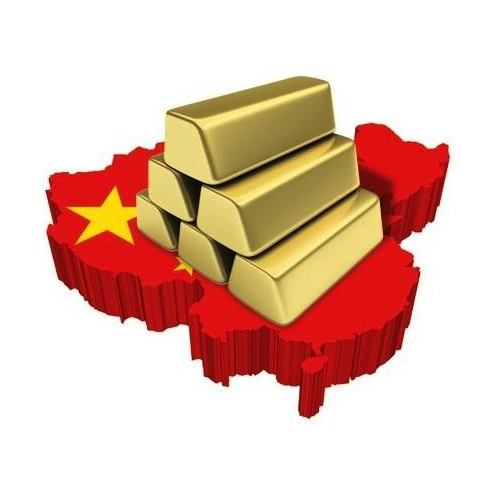 Estimated Chinese Gold Reserves Surpass 20,000t
Estimated Chinese Gold Reserves Surpass 20,000t
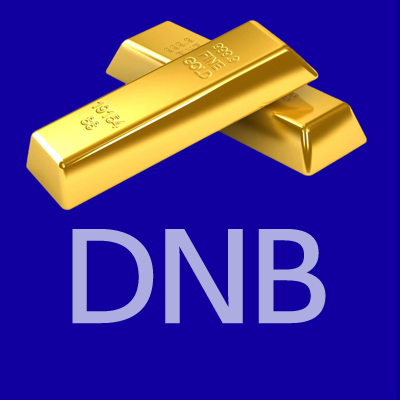 Did the Dutch Central Bank Lie About Its Gold Bar List?
Did the Dutch Central Bank Lie About Its Gold Bar List?
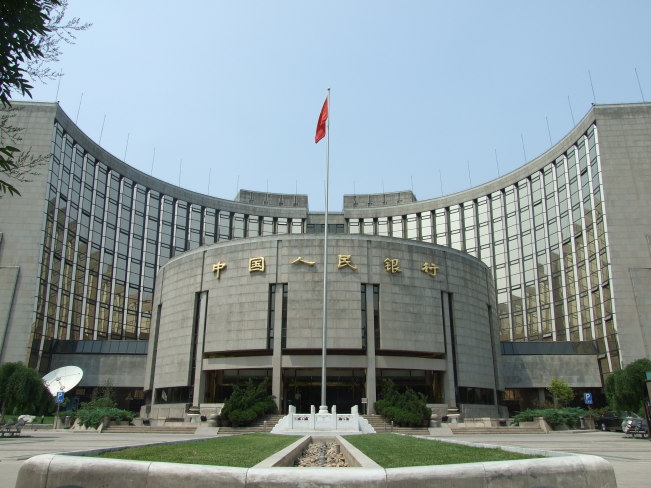 PBOC Gold Purchases: Separating Facts from Speculation
PBOC Gold Purchases: Separating Facts from Speculation
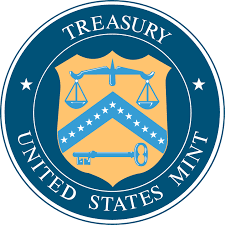 U.S. Mint Releases New Fort Knox Audit Documentation
U.S. Mint Releases New Fort Knox Audit Documentation
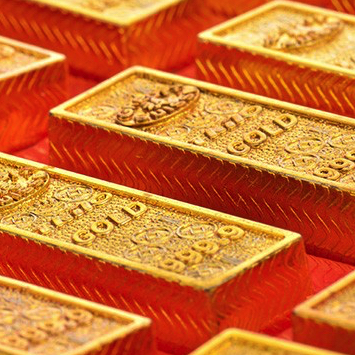 China Net Imported 1,300t of Gold in 2016
China Net Imported 1,300t of Gold in 2016
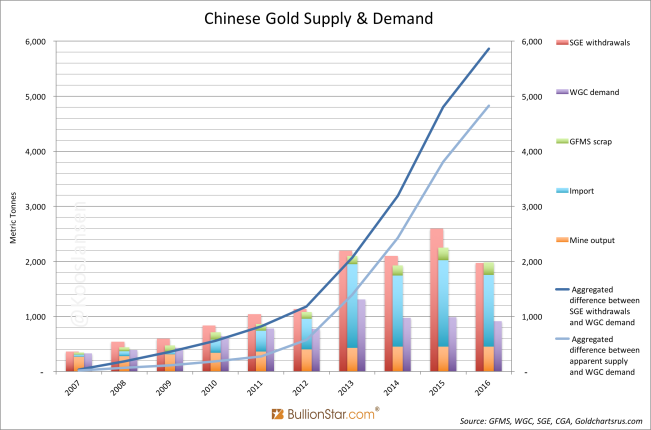 Why SGE Withdrawals Equal Chinese Gold Demand and Why Not
Why SGE Withdrawals Equal Chinese Gold Demand and Why Not





 Koos Jansen
Koos Jansen











